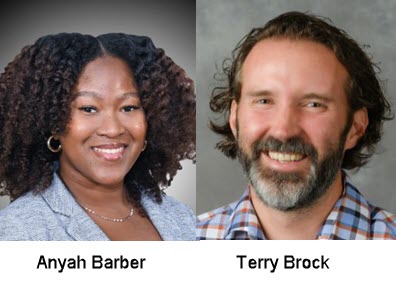Abstract
Excerpted From: Anyah Barber and Terry Brock, A Past Forgotten: A Look at Governmental Efforts to Recover and Restore Historic African American Cemeteries, 59 Wake Forest Law Review 835 (2024) (92 Footnotes) (Full Document)
 For many people, death care begins far before the death of an individual. However, the penultimate milestone in death care is the funeral. The funeral:
For many people, death care begins far before the death of an individual. However, the penultimate milestone in death care is the funeral. The funeral:
Helps confirm the reality and finality of death.
Provides a climate for mourning and the expression of grief.
Allows the sorrows of one to become the sorrows of many.
Is one of the few times love is given and not expected in return.
Is a vehicle for the community to pay its respects.
Encourages the affirmation of religious faith.
Is a declaration that a life that has been lived as well as a
sociological statement that a death has occurred.
But what happens after the funeral? The committal is performed, usually at a cemetery, and then it is followed by a reception. Days, weeks, and months pass, but then what? For many, the grieving process may include visiting the cemetery where their loved ones are buried, but eventually the grief passes, and they visit less and less often. As this cycle continues, burial plots, and eventually the cemetery itself, fall into disarray as development increases, the ground shifts, trees grow, headstones fall, and a number of other environmental factors transpire.
While some cemeteries are well maintained, others go neglected for years to the point where they are unrecognizable or lost entirely. All too often, this is the reality of African American families and the cemeteries where their ancestors are buried. Across the United States, remains of African Americans have been found in unofficial cemeteries or unmarked graves, and there is no official count of how many similar sites may be in existence. “In contrast with law's solicitous treatment of cemeteries generally, ... the history of legal treatment of slave and other long-standing African-American burial grounds has been one of neglect or outright disregard.” To some, neglected cemeteries may be just that, but to many African Americans, “the neglect of [African American] burial grounds is an extension of the racism Black people experience while living.” Although the United States has grown significantly since the time of slavery, African Americans, and many other minority populations, still face many challenges even in the twenty-first century, not only while living, but even in death.
The Unmarked documentary chronicles the rise in preservation and restoration efforts of African American cemeteries. Focused on the South, Unmarked chronicles the stories of various families who are descendants of slaves and their efforts to recover the historic cemeteries where their ancestors are buried. The documentary highlights that restoration efforts of African American cemeteries have largely been organized by community groups and families. The federal government, along with several state and local governments, have begun passing legislation that aims to preserve and restore African American cemeteries in an effort to combat the systemic struggles of African Americans. Although many preservation and restoration efforts are in the early stages, this progress brings hope to many families, communities, and cities working to preserve history.
This Essay will take an in-depth review of the current state of preservation and restoration efforts in the United States. Part I explores the federal African American Burial Grounds Preservation Act and compares it with the Native American Graves Protection and Repatriation Act. Part II will look at the efforts of some of the Southern states, with a focus on North Carolina and Preservation Forsyth's Unmarked Initiative. Finally, Part III will reflect on the thoughts of North Carolina lawmakers as well as other individuals involved in the preservation and restoration efforts within the state. “Without history, you have no beings of who you are, where you're from, and how you got to where you are today.” The widespread effort to preserve and restore African American cemeteries is a testament to the rich history African Americans provide to the United States that is worthy of remembrance.
[. . .]
As discussed in Part I, and as seconded by Melissa Timo, the most prominent next step for historic African American cemeteries is having federal legislation that resembles the Native American Graves Protection and Repatriation Act. “Cemeteries aren't just places, they have emotions and trauma attached to them.” As such, they should be treated with the dignity and respect that the African American community deserves. There is a long history of mistreatment of African Americans in the United States, and this mistreatment is tenfold in the South, but in death there is dignity, and our historic African American cemeteries deserve the time and dedication for appropriate preservation and restoration.
Anyah Barber, J.D. 2024, Wake Forest University School of Law; B.A. 2021, Mathematics and Secondary Education, Clemson University; Associate Attorney at Boykin & Davis, LLC.
Terry Brock, Part-Time Assistant Professor and Research Associate of African American Studies, Research Associate with Cultural Heritage and Preservation Studies, Manager of Archaeology at the Wake Forest Historical Museum, and Director of the Cultural Heritage and Archaeology Research Group at Wake Forest University.


